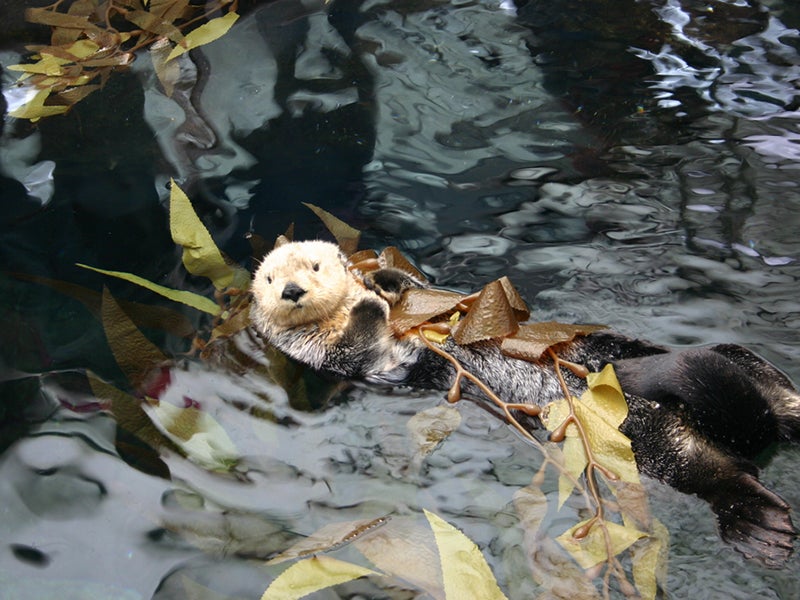Whale Poop and Walrus Tusks: How Creatures Shape the Seas
Our most beloved sea creatures aren’t just adorable—they also play a critical role in regulating ocean ecosystems.

This page was published 9 years ago. Find the latest on Earthjustice’s work.
Whales, otters and sea turtles aren’t just cute creatures that capture our imagination. They each play a critical role in regulating ocean ecosystems. Though most people agree that these endearing and charismatic species are worth protecting in their own right, few realize that their presence and abundance is key to the overall health of oceans already threatened by pollution, acidification, climate change and overfishing.
Sea Otters
Sea otters are a keystone species that keep grazing sea urchins from wiping out kelp forest ecosystems. When the grazers are kept in check by otters, kelp flourishes and provides habitat for many other species. Without predation by sea otters, urchins can decimate kelp, transforming lush underwater forests into barren wastelands suitable only for urchins—and urchin fishermen.
Whales
Recent research suggests that whales, like otters, are actually “ecosystem engineers” that make oceans much more productive than they would be otherwise. Their feces actually fertilize the ocean’s surface, making nutrients available to the tiny phytoplankton that are the basis of the marine food chain. By diving to feed and surfacing to defecate, whales recycle nutrients that would otherwise fall to the ocean floor and be taken out of circulation. By taking nutrients from the deep and returning them to sunlit surface waters, whales help ensure all sea creatures have enough to eat.
Walruses
Walruses play a unique and major role in the Arctic Ocean ecosystem. Walruses use their tusks to “plow” the ocean floor in search of shellfish. And just like plowing the earth helps aerate the soil and recycle nutrients, in stirring the seabed walruses provide habitat for invertebrates and make food available for scavengers.
Sea Turtles
Whether we find them swimming over seagrass beds or coral reefs, feeding in the open ocean or nesting on the beach, endangered sea turtles help keep their ecosystems healthy. For example, unhatched turtle eggs help fertilize the beach and encourage vegetation growth that stabilizes the sand dunes and protects them from erosion. Turtles also feed on jellyfish that, in turn, feed on fish eggs and larvae. Because ocean warming and certain types of pollution can accelerate jellyfish reproduction, keeping jelly numbers under control is increasingly important, and enforcing protections for sea turtles is even more critical.
Sharks
Finally, just as wolves prevent overgrazing and erosion on land by keeping populations of elk in check, sharks also create more balanced and diverse marine ecosystems by keeping their prey from overrunning the ocean’s limited resources. By limiting grazers, the mere presence of sharks benefits both seagrass beds and coral reefs. In addition, the collapse of shark populations may be linked to an explosive increase in the number of skates and rays, which in turn could be contributing to the decline of clam and scallop populations in the North Atlantic.
For all these reasons, Earthjustice attorneys work tirelessly to protect marine animals and ensure a more sustainable and humane use of ocean resources. In protecting these magnificent creatures we also work to protect entire complex marine ecosystems that benefit many other species, including our own.